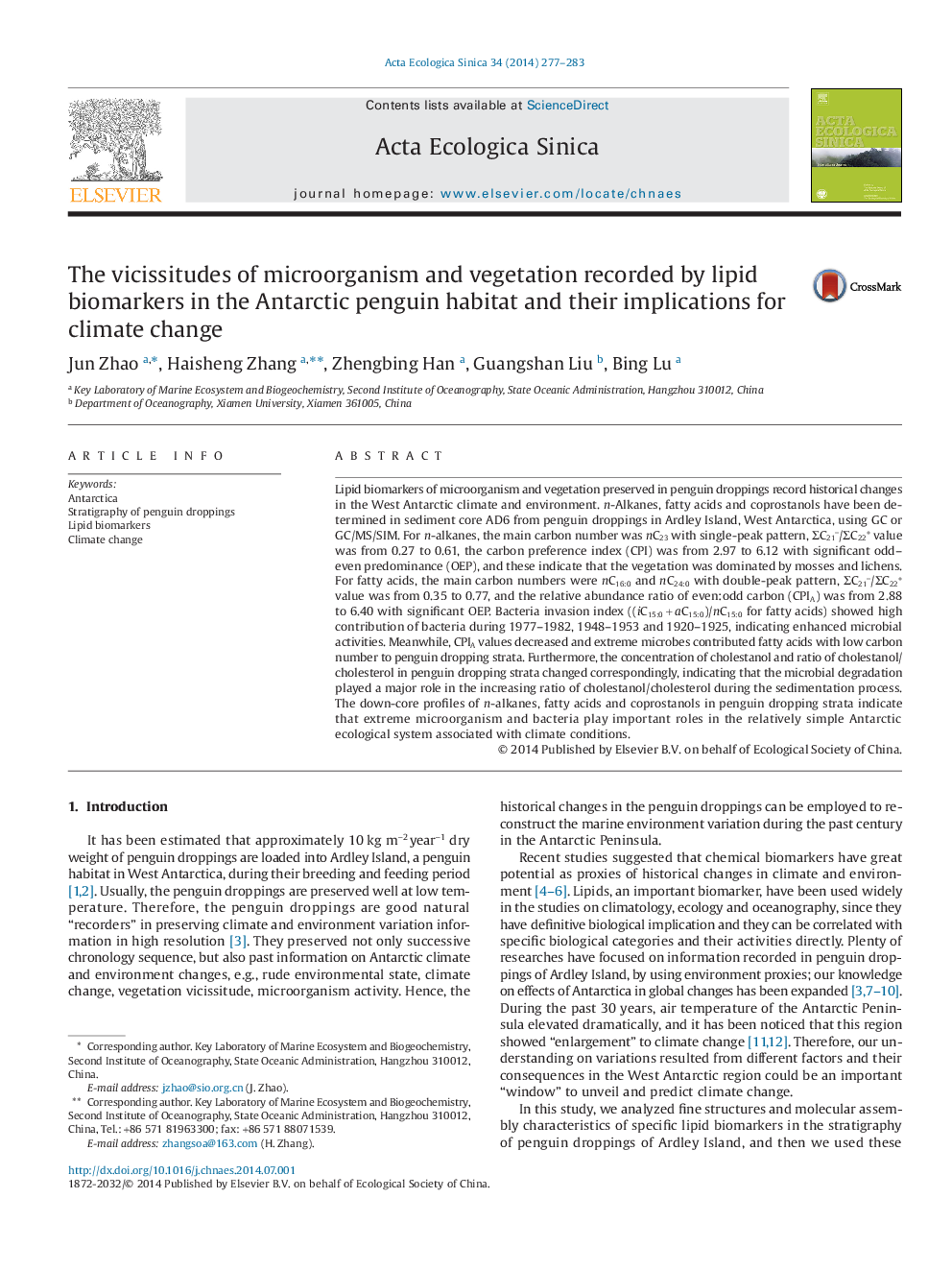| Article ID | Journal | Published Year | Pages | File Type |
|---|---|---|---|---|
| 4379932 | Acta Ecologica Sinica | 2014 | 7 Pages |
Lipid biomarkers of microorganism and vegetation preserved in penguin droppings record historical changes in the West Antarctic climate and environment. n-Alkanes, fatty acids and coprostanols have been determined in sediment core AD6 from penguin droppings in Ardley Island, West Antarctica, using GC or GC/MS/SIM. For n-alkanes, the main carbon number was nC23 with single-peak pattern, ΣC21−/ΣC22+ value was from 0.27 to 0.61, the carbon preference index (CPI) was from 2.97 to 6.12 with significant odd–even predominance (OEP), and these indicate that the vegetation was dominated by mosses and lichens. For fatty acids, the main carbon numbers were nC16:0 and nC24:0 with double-peak pattern, ΣC21−/ΣC22+ value was from 0.35 to 0.77, and the relative abundance ratio of even:odd carbon (CPIA) was from 2.88 to 6.40 with significant OEP. Bacteria invasion index ((iC15:0 + aC15:0)/nC15:0 for fatty acids) showed high contribution of bacteria during 1977–1982, 1948–1953 and 1920–1925, indicating enhanced microbial activities. Meanwhile, CPIA values decreased and extreme microbes contributed fatty acids with low carbon number to penguin dropping strata. Furthermore, the concentration of cholestanol and ratio of cholestanol/cholesterol in penguin dropping strata changed correspondingly, indicating that the microbial degradation played a major role in the increasing ratio of cholestanol/cholesterol during the sedimentation process. The down-core profiles of n-alkanes, fatty acids and coprostanols in penguin dropping strata indicate that extreme microorganism and bacteria play important roles in the relatively simple Antarctic ecological system associated with climate conditions.
